Lions Automobilia
Feature and pictures by Andy 'Tog' Rogers
See below for photo gallery.

|
When attending drag races on the west or east coasts of the USA it is traditional to make a visit to the NHRA Motorsports Museum or the Don Garlits Museum of Drag Racing. What you may not know � which I certainly did not until made aware of it very recently by FIA Drag Racing Commission President Lars Pettersson � is that there is a museum dedicated to both the legendary Lions Drag Strip which operated in Wilmington, California, between 1955 and 1972, and to the surrounding car culture of Southern California. Honouring and preserving this legacy has been simple aim of the Lions Automobile Foundation and Museum which were founded by Rick Lorentzen, a local businessman who grew up a stone�s throw from the Lions track. The Museum, which opened in 2019, is in Rancho Dominguez close to the location of the fabled strip and is housed in a building with a modest frontage in an area of light industry. The Foundation also hosts automotive events, organises youth programmes, and provides guest speakers and workshops. The Spirit of Lions Drag Strip opens with a recreation of the Lions start area complete with flying Christmas Tree. In this area can be found amongst others the Ohno, Lew and Gonzales slingshot as well as Pure Hell and Pure Heaven Fuel Altereds lined up beneath a simulacrum of the Tower complete with Steve Evans at the microphone. The huge mural on one side of the display depicts many of the legendary characters of drag racing standing in the bleachers. Elsewhere in the museum are some priceless items such as Paul Nicolini and Harry Duncan�s Sidewinder originally driven by Ted Cyr; Jack Chrisman�s first race car, a 1929 Model A Sedan; the first Stones, Wood and Cook Willys Gasser; the Ewell, Stecker and Kamboor Chabasco Fuel Dragster; the Scribner�s Automotive �56 Chevy Gasser; the Spaghetti Bender slingshot; Creighton Hunter's Hunter Oil Special (the first race car with Moon eyes); a recreation of the Bob's Muffler Shop B/Gas Dragster; and an early Ramcharger. Recent donations include an immaculate Anglia and a 1970s Funny Car which is currently under wraps pending unveiling in June. Two early and frankly scary-looking drag bikes are included in the collection as well as memorabilia, clothing, firesuits, a display cabinet full of Revell and other models, and screens dotted around the facility showing racing footage and interviews with legendary racers. The Museum does not feature only drag racing. Other features, which you can also find in the gallery below, are Main Street USA, American Muscle, TV Cars, Willys Overland, Hollywood Horsepower and Workforce Vehicles. Every vehicle could have come straight from the factory; one dreads to think what the collection must be worth. Facsimiles of a diner, garage, speed shop, cinema front, hobby shop and more can be found around the museum as well as a workshop with large glass window to allow viewing of the current restoration project. Expansion of the display area is planned as well as a Motorsports Events Centre. At present the Museum is open only on Saturdays, between 10:00 and 16:00, and advance booking is recommended on the Lions Automobilia web site at www.lionsautomobilia.org. The site also tells you all you need to know about both the organisation as a whole and the museum. Adult tickets are $16 with various generous concessions available. The Museum hosts a large number of special days for particular marques, for example a Camaro Day is coming up very shortly and a Funny Car Day is planned for 11th June with the official unveiling of a recent donation from the early 1970s. Again the special event calendar can be found on the web site. The Lions Automobilia Foundation and Museum can be found at 2790 East Del Amo Boulevard (although note that the gate is around the corner on Santa Fe Avenue), Rancho Dominguez, CA 90221. It is moments off the I-710 Long Beach Freeway and a few minutes� walk from the Del Amo tram station on Line A. I must thank Lars Pettersson for telling me about the existence of the Museum in the first place, and the Museum staff who allowed me on to the central display to photograph the vehicles in the tableau. |
| Click on any thumbnail for a large image. Click here to return to the Features index. | ||||
|
|
||||
 |
 |
 |
 |
 |
 |
 |
 |
 |
 |
 |
 |
 |
 |
 |
 |
 |
 |
 |
 |
 |
 |
 |
 |
 |
 |
 |
 |
 |
 |
 |
 |
 |
 |
 |
 |
 |
 |
 |
 |
 |
 |
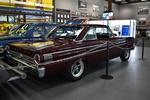 |
 |
 |
 |
 |
 |
 |
 |
 |
 |
 |
 |
 |
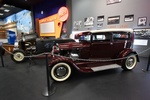 |
 |
 |
 |
 |
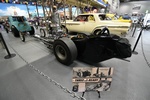 |
 |
 |
 |
 |
 |
 |
 |
 |
 |
 |
 |
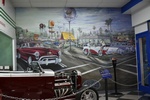 |
 |
 |
 |
 |
 |
 |
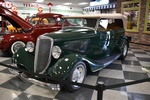 |
 |
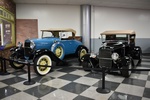 |
 |
 |
 |
 |
 |
 |
 |
 |
 |
 |
 |
 |
 |
 |
 |
 |
 |
 |
 |
 |
 |
 |
 |
 |
 |
 |
 |
 |
 |
 |
 |
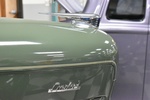 |
 |
 |
 |
 |
 |
 |
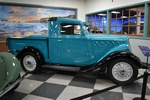 |
 |
 |
 |
 |
 |
 |
 |
 |
 |
 |
 |
 |
 |
 |
 |
 |
 |
 |
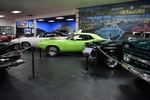 |
 |
 |
 |
 |
 |
 |
 |
 |
 |
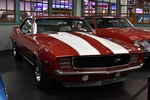 |
 |
 |
 |
 |
 |
 |
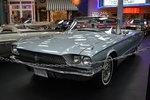 |
 |
 |
 |
 |
 |
 |
 |
 |
 |
 |
 |
 |
 |
|
|
||||